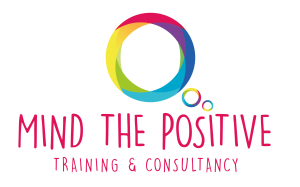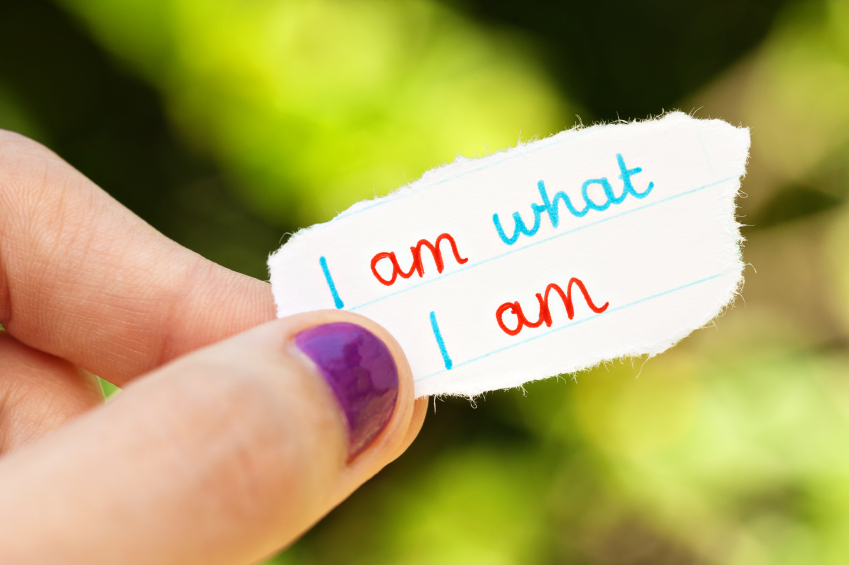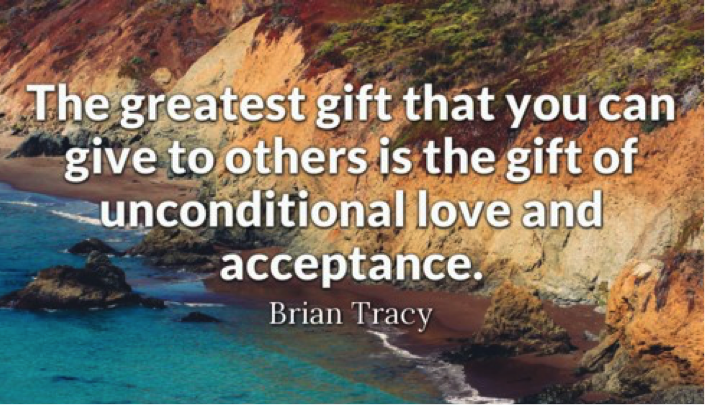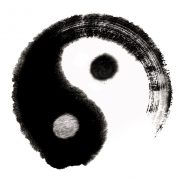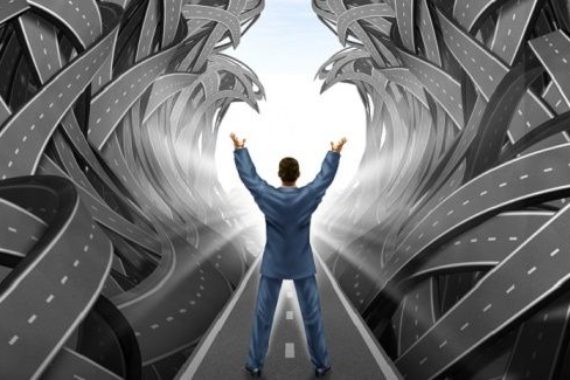Which Track Are You On, Acceptance Or Resistance?
In my previous article –“Accept or Perish!” I tried at my best to reflect on the power of acceptance. Though seems apprehensible and noteworthy, it is partly easier said than done! In fact, it is easier to “talk” about acceptance, whereas highly demanding to literally take the course of actions towards getting over with a situation. It is most frustrating when we live in between acceptance and resistance; while cognitively willing to accept, we subconsciously resist to what is challenging us. My mere intention is to open a window, for living an accountable and in charge life; where we may realize that “Not all storms come to disrupt our life, (but) some come to clear our path.” So, it is up to us whether we choose between two distinct tracks –the track of resistance or the track of acceptance, which each leads us to different directions. Once we decide on which to take, the rest is easy!
To begin with, let’s acknowledge ourselves with the fact that, every little thing that we newly experience or attempt doing, at first, is difficult! Naturally, with each try of ‘baby steps’, we accumulate new learning and experiences. The acquired knowledge leads to simpler practice, and finally, “practice makes perfect!” The task gets as easy as “piece of cake!” This is applicable for every little piece of task we have: a student’s math problem, a skilled employee’s novice working technique, or a conventional person’s shift in thoughts! Nonetheless, it is pivotal to understand the whats, whys, and hows, so as to choose… So, let’s see where those two tracks –resistance and acceptance, take us.
Please think of a situation that has been challenging you for some time; that you have either resolved it somehow, or it is still on hold waiting to get resolved. I call this a stimulus that demands your reaction or response. In other words, it is your attitude towards the challenging situation. Please recall your attitude. Which track have you taken, an automatic reaction of resisting or a conscious response of accepting? They are quite distinct from one another. Each leads to a totally different direction. To experience the difference, I invite you to a tiny exercise: If you are in a sitting position, get up and stand in front of a wall, keeping one-step distant. Lift your dominant arm –if you are right handed, then your right arm– and place your palm against the wall. Let your palm touch the wall, feel the cold and texture, and its stillness. Now give pressure onto the wall, pressing it with force. Pay attention to the sensations you feel in your palm, arm, and shoulder. Observe whatever there is when you press lightly; or a little more strongly; and perhaps forcefully… How does it feel; does the wall stand still, or does it feel as though it pushes back?
“How can it push back? It’s just a wall, standing still!” you must be wondering. Please; pause for a moment and pay attention to the sensations on your palm, arm, and shoulder; and try to mindfully sense a slight feeling of push-back from the wall. The stronger you press, the more you’d feel its force; when you press lighter, it would feel less resisting back to you; and when letting it go (not pressing at all, but slightly touching), you would simply have no sense of pressure on your shoulder, arm, or palm. You have literally reciprocated a degree of force with a non-living standing wall! What does this all mean, especially in relation to our attitude in the face of a stimulus?
What happens when we adopt a resisting attitude? The stimulus that we are trying to stop, ignore, or push away resists and pushes back; with equal to higher degree of force. You may feel the sensations on your upper arm and shoulder when observing the wall’s resistance; even slightly more strongly compared to your resistance. After letting the pressure go, although the force is no longer present, the effect would still remain! This is because, we are less mindful of momentary sensations or events, therefore we feel the effect hours or even days after our reaction. What else occurs when we take the track of resistance? Through automatic reaction of judging, labeling, or categorizing as good-bad, right-wrong, etc., we get into the loop of negative emotions, where we choose to ignore the factual reality, and try to stop it from intervening our life. We may find ourselves making up stories that temporarily ease the situation, however distorting our perception of the reality. This path leads us to lose our ability of managing our resources –thought, emotions, observations, clarity, etc. In a sense, we shut down, and narrow down our functioning within a closed system, where minimum interaction occurs with the external environment.
Let’s find out what occurs when we take the track of acceptance… The whole process of functioning leads to an entirely opposite direction, where the individual adopts a conscious response. In this path, through observation, receptive open awareness, curiosity for exploration, and non-judgmental attitude, we free ourselves from the loop of negative emotions, guiding towards ‘neutral’ area, where we feel willing to deal with the situation, and have the power to take charge. We feel accountable of our actions and their consequences; because we take deliberate course of action and behavior, where we carefully observe and consciously manage our resources –thought, emotions, observations, clarity, etc. Here we build healthy relationships with others and ourselves –that is, broadening our functioning within an open system.
Psychologist Barbara Fredrickson explains this mechanism through the Broaden-and-Build theory. The theory claims that negative emotions or challenging situations may block and narrow the thought and action capacity of the person. This causes to quick and decisive moves, where these actions or ‘reactions’ may carry immediate benefit or loss. However, in state of positive emotions, or feeling of confidence, person’s thought and action processing is broadened. The thoughts and actions the mind generates are widened with more potential outcomes; the broadened state allows individuals to grow the capacity to generate more alternative thoughts and actions, and maintain more enduring psychological, physical, intellectual, and social resources. To summarize, while the track of resistance narrows and blocks our capacity of thought and action, the track of acceptance generates an infrastructure to broadening and building it. So, whatever present moment has for us, it is better to accept and then act, for a positive transformation and well-being.
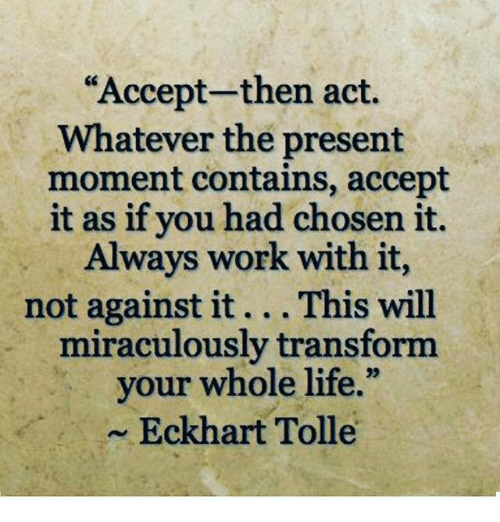
Acceptance involves two major concepts: ‘let go’ and ‘let be’; that may also be associated with forgive and forget. Let’s imagine two scenarios. Scenario 1: You are driving in the rush hour. Despite checking the routes, you have deliberately taken the one with heavy traffic. Feeling frustrated of your wrong choice, you get angry with yourself and wish you hadn’t taken that last turn! Perhaps, swept away into the negative emotions with “if only I hadn’t taken that turn!!!” and judging or scolding yourself until you arrive your destination. What is it that you have done to deserve such self-treatment? You had chosen among many alternatives and went on with your choice! It’s unfortunate that your pick turned out to be a wrong one! It could have been the opposite. Meanwhile, this doesn’t change the fact that, once you have picked one choice, you let the other alternatives go. So, you had already let them go! Why now, is it so difficult to let the negative emotion of wrong decision-making go? Aren’t we, allowed to make mistakes, and to forgive ourselves? Who prevents us from doing that? It is us who will ban or allow ourselves from forgiving and accepting. Bottom line; acceptance is directly related with forgiving and letting go!
Scenario 2: You are again driving in the rush hour; have taken your usual route. Unfortunately, you are ‘stuck’ in traffic for more than an hour, at the exact same spot! Unable to move to any direction, you feel frustrated, overwhelmed, and want to break free. You have nothing to do, and need to wait until traffic clears. It is an undesired situation, where you seem in the wrong place at the wrong time; however not! Your presence there has nothing to do with any wrong decision or choice you have taken. It means that you have nothing (choice, decision, or action) to let go. You simply need to accept the fact that you are supposed to be there at that particular moment! Instead of struggling against it, why can’t you let it be? Eckhart Tolle says that we should be accepting what present moment contains, as if we had chosen it; always work with it, and not against; because there lays the opportunity of a miraculous transformation. So, just for once, have a pause and let the situation be! Surrender to what there is! This will allow all thoughts, ideas, and resources you may need come to you. So, if you cannot let it go -you certainly would if you could- then just let be!
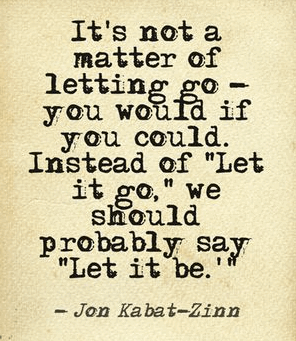
I will now leave you with a practical tool to help you with the process of acceptance, against a stimulus. It is a simple 5-step process: pause, inhale, notice, articulate, and respond (PINAR).
- When faced with a challenging situation –the stimulus, simply give yourself a short moment of pause, put all thoughts, movement, or emotions on hold for a slight moment (P).
- This pause will give you an opportunity to back away one step from a potential drama. Once you are ‘out of the box’, take a few breaths, inhaling fresh air into your body and exhaling toxic thoughts, feelings, labels, judgments, conclusions, and even intentions (I).
- Once you let some toxic out, allow yourself to neutrally notice and observe what the present situation offers you. Allowing yourself to notice brings the awareness on what there is within yourself (emotions, bodily sensations, thoughts, expectations, intentions, attitude etc.) and within the situation. At this stage, all you need is to notice, observe, and take whatever comes (N).
- Now it is time to articulate your observations, reflecting on them through your questioning, reasoning, and target setting. As a result of your articulation, you formulate new insights towards deliberate actions. You are more aware of what your intention is, and you are more in control of the consequences of the move you are about to take (A).
- At this final step, instead of a reaction, you are ready to take your action within a conscious, auto-control, and responsive attitude. It is up to you whether you take the track of acceptance or resistance (R).
Remember, “practice makes perfect” is always possible through baby steps… The only reminder we need is to Pause! Once we are able to remember a slight momentary pause, at times of adversity, struggle, or challenge, the rest follows…
Enjoy each try; enjoy the learning; and enjoy life!
[:]
